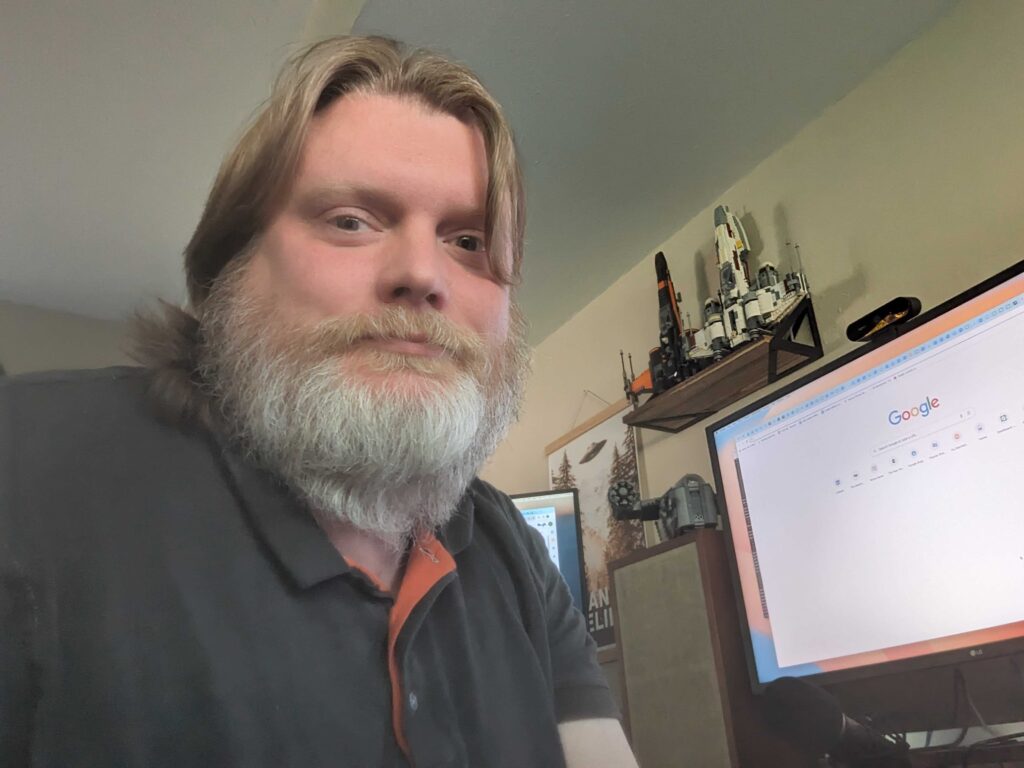Alumni Spotlight – Jason Grigsby
Meet Dr. Jason Grigsby, Wake Forest Physics Ph.D. class of 2009. Dr. Grigsby has traversed a diverse career path, from working as a Postdoctoral associate studying neuroscience to assuming the duty of a software engineer. In the following interview Professor Salsbury discusses with Dr. Grigsby his experience as student, his subsequent career path, and how Wake Forest helped him.

Prof. Salsbury: What are you doing now career-wise?
Dr. Grigsby: I studied under Professor Cook and was awarded a PhD in numerical relativity from Wake Forest University in 2009. My thesis was on Analyzing and Improving Initial Data for the Binary Black Hole problem. Some of that work provided a small contribution to the simulations that were ultimately compared against when the first direct detections of gravitational waves were found at the Advanced Laser Interferometer Gravitational-Wave Observatory (LIGO).
Prof. Salsbury: What did you do right out of Wake Forest?
Dr. Grigsby: Since then I worked as a postdoc in the same field at the Friedrich-Schiller University in Jena, Germany, followed by a stint studying neuroscience related to hearing in the subcortical regions of the brain. I then transitioned to working in the private sector by taking a job at Wolfram Research, makers of Mathematica, where I focused a great deal on the build system used for the Mathematica kernel and contributed to some of their remote kernel and parallel systems. After that, I spent five years as a data engineer at Yahoo and a year and a half ago started as a senior software engineer at Google focusing on targeting for Google’s advertising network.
Prof. Salsbury: How did Wake Forest Physics help you get where you are today?
Dr. Grigsby: Working on a PhD in physics has helped my career in so many ways that I can’t possibly enumerate them all. In numerical relativity, I developed a good start in understanding many issues of both numerical code and parallel computing. These are directly important in big tech work. However, those practical skills sit aside perhaps more valuable talents I was taught like the ability to research a subject on my own and develop ideas on how to apply what I learned to my work and how to think about working on truly large projects where you will make many small incremental gains that can add up to something truly impressive. It should also be mentioned that writing research articles for journals and my thesis and giving presentations on my research provided me with the communication skills that are so desperately needed in high tech work.
Prof. Salsbury: Do you have an anecdote you would care to share either from your time at Wake Forest physics or from afterward relevant to Wake Physics?
Dr. Grigsby: My time as a PhD student in the Wake Forest physics department really was one of the best times of my life. Later in life, you’re almost never afforded such an opportunity to focus on developing who you are, learning about fantastic topics from inner cell molecular travel mechanisms all the way to the collisions of binary black holes. You’ll later spend most of your time focused on external goals, getting features together by deadlines, perhaps applying for funding, and so many other things that you’ll rarely get that chance to focus on something that truly makes you wonder about the nature of the universe. It’s also your chance to have direct access to the brilliant professors in the department. If I didn’t show enough appreciation at the time, I hope the department faculty are hearing it from me now that I’ve had more life behind me to gain perspective.
Prof. Salsbury: Is there anything you would like to share with prospective or current students?
Dr. Grigsby: To both the undergraduate and graduate students at Wake Forest’s physics department, congratulations on stepping into this opportunity. The things you are working on now can have an amazing impact in the future and will open the world to you. It’s hard work, and sometimes it can bring you to tears, but it’s absolutely worth it.
